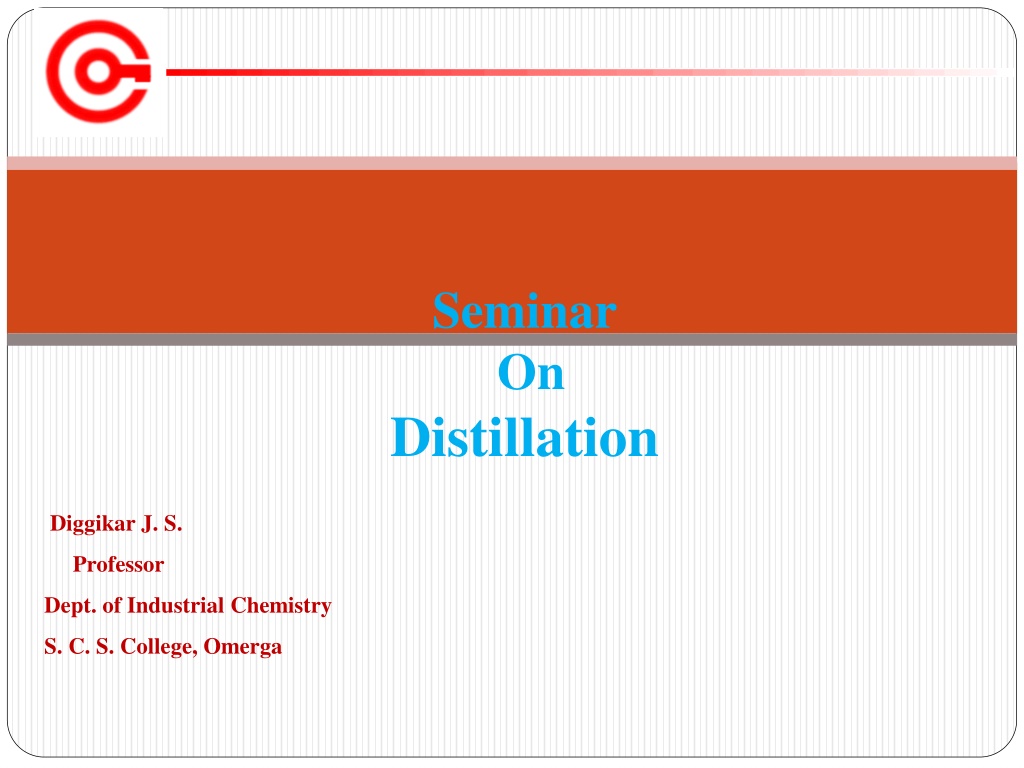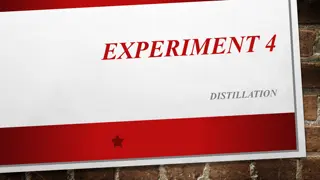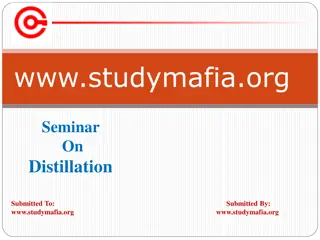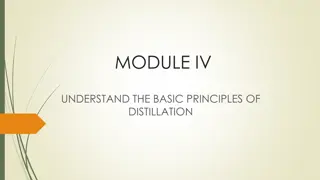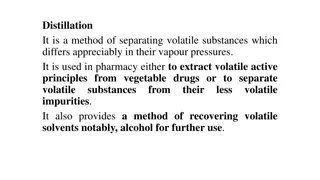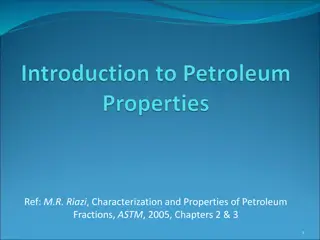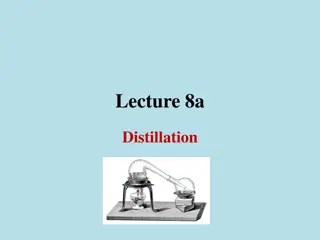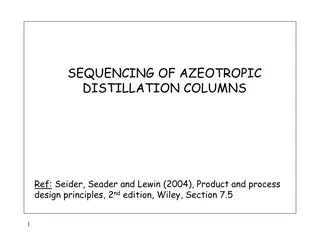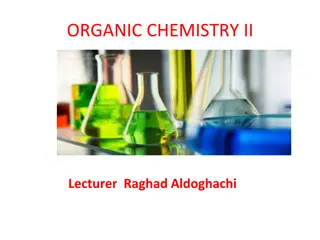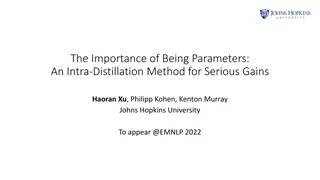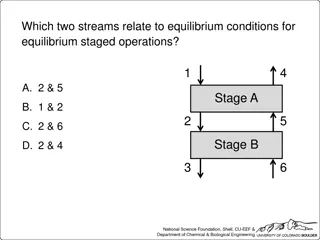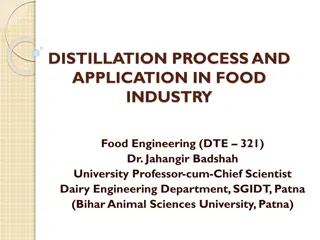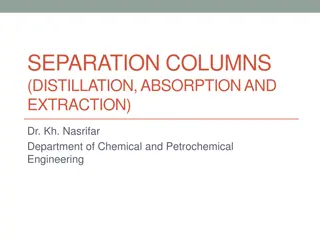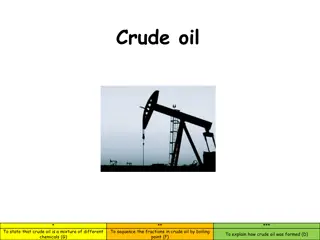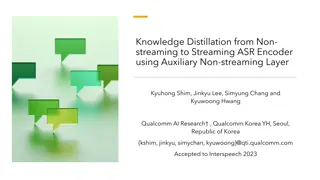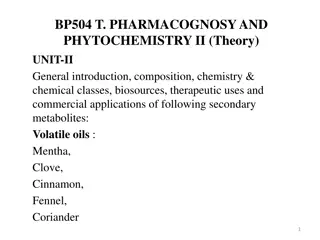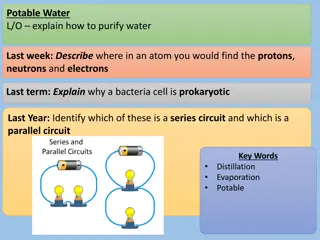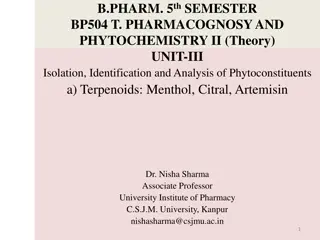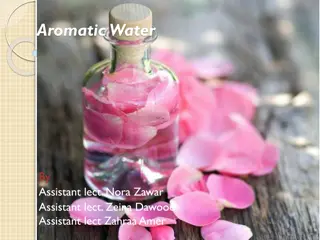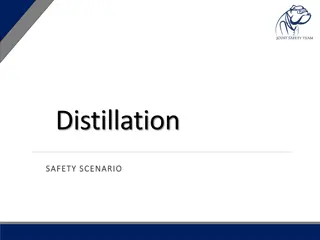Understanding Distillation: A Comprehensive Overview
Distillation is a crucial separation technique used in chemistry to purify materials by separating liquids with different boiling points. This process involves simple and fractional distillation methods, each with specific steps and applications. The article discusses the importance, advantages, and disadvantages of distillation, along with practical instructions for conducting simple and fractional distillation experiments. Explore the various aspects of distillation and its significance in industrial and laboratory settings.
Download Presentation

Please find below an Image/Link to download the presentation.
The content on the website is provided AS IS for your information and personal use only. It may not be sold, licensed, or shared on other websites without obtaining consent from the author. Download presentation by click this link. If you encounter any issues during the download, it is possible that the publisher has removed the file from their server.
E N D
Presentation Transcript
Seminar On Distillation Diggikar J. S. Professor Dept. of Industrial Chemistry S. C. S. College, Omerga
Index Introduction Distillation Simple Distillation Fractional Distillation Applications of Distillation Uses of Distillation Advantages of Distillation Disadvantages of Distillation Conclusion
Introduction Introduction Since organic compounds do not usually occur in pure condition in nature, and are accompanied by impurities when synthesized, the purification of materials forms an important part of laboratory work in chemistry. Four general separation procedures are used frequently in organic work in the laboratory and in industry: distillation, chromatography, crystallization, and extraction.
Distillation Distillation Distillation is used to separate two liquids of sufficiently different boiling points. An equilibrium between vaporizing and condensing in a distillation column allows for the separation of liquids. Most of the lower boiling liquid is collected in a receiver vial while most of the higher boiling liquid remains in the original flask.
Simple Distillation Add 60 mL of 20% ethanol-water mixture in a 100-mL round-bottomed flask from the macroscale kit. Add boiling chips. Assemble apparatus for simple distillation as shown in Fig 5.10 (page 100). Ensure that all the connections are tight. The bulb of the thermometer should be below the opening into the side arm of the distillation head. Heat the flask strongly on the thermo well (no sand) until boiling begins, then adjust the heat until the distillate drops at a regular rate of one drop per second. After 50 mL of distillate is collected, discontinue distillation and save your distillate for fractional distillation.
Fractional Distillation Place the 50 mL of distillate from simple distillation experiment back into the 100-mL round-bottomed flask once it has cooled. Add boiling chips. Assemble the apparatus for fractional distillation as shown in Fig. 5.11 (page 102). Use stainless steel wool that will be provided to pack the fractionating column. Insulate the column with a towel to prevent flooding of the column as this slows down the distillation. Record temperature for every milliliter of distillate collected and take more frequent readings as the temperature begins to rise abruptly. Empty the contents of the graduated cylinder into a 25 mL Erlenmeyer flask once it fills. Stop the distillation once the second constant temperature is reached. Repeat the ignition test and note any difference from before.
APPLICATIONS OF DISTILLATION APPLICATIONS OF DISTILLATION The application of distillation can roughly be divided in four groups:- Laboratory scale Industrial scale Herbal distillate Food processing The latter two are distinctively different from the former two in that in the processing of beverages.
Uses of Distillation Uses of Distillation Distillation is used for many commercial processes, such as the production of gasoline, distilled water, xylene, alcohol, paraffin, kerosene, and many other liquids. Gas may be liquefied and separate. For example: nitrogen, oxygen, and argon are distilled from air.
Advantages of Distillation It is an efficient method of water softening for smaller purposes. It is relatively cheap. It can also be reused.
Disadvantages of Distillation As a process of water softening, distillation requires a keen eye, so that unwanted elements do not mix with water. When distillation is done on a larger scale, a very high amount of energy needed. The distilled water does not contain any oxygen and is also very tasteless. It has very high levels of acidity.
Conclusion Distillation should not be considered as a method of water softening because one might end up having unwanted elements in the distilled water. For example, liquids that have a boiling point equal to water will not be separated but will condense with the water. Moreover; the process requires a lot of energy to be carried out.
Reference Reference www.google.com www.wikipedia.com www.studymafia.org
